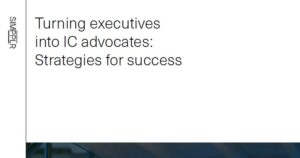How to build a strong remote culture through individualized employee communications
To create a sense of community, Monster prioritized the individual employee.

A strong remote culture benefits everyone at your company. Whether your employees work in-office or remotely, having a robust remote culture prepares employees to collaborate effectively whenever they’re not in the same space. And in the modern workplace, that can happen often.
Collaborating with employees across long distances is no longer just a necessity imposed by a worldwide pandemic — it’s now the reality of scaling businesses and companies with frontline employees. Not to mention, it’s a must for organizations that want to offer flexible work perks as a hiring incentive.
Remote work remains a significant part of the employee experience, and companies need to proactively invest in building up remote culture.
So what is remote workplace culture exactly? According to Wendy Englebardt, internal communications director at Monster, it’s all about the unconditional feeling of connection that coworkers experience when they’re bonded by similar priorities, interests, and attitudes.
To create a sense of community, Englebardt — along with Monster’s VP of Global Talent Management, Kaelyn Phillips — prioritized the individual employee.
Their goal was to break down silos and build community. And while that sounds great on paper, it was no small feat logistically. To do this, they scaled and increased communications while restructuring their internal communications channels.
Their efforts involved creating talk tracks for leaders to share information directly with employees via team meetings and personalized emails. It also included developing segmented emails, adding more customized content, and doubling down on wellness communications.
For Englebardt’s team, shareable email templates and internal email software like ContactMonkey made it easy to send segmented emails at scale. With ContactMonkey, users can create responsive HTML email templates for different occasions and send them on behalf of leadership teams, HR personnel, and other departments in a synchronized manner. Multiple communicators can work on a template simultaneously and watch changes in real-time — just like in Google Docs.
But personalization is the real key here. Remote employees can sometimes feel lost and disconnected from the organization. Using ContactMonkey’s email personalization feature, communications pros like Englebardt can address individual employees by name within their newsletter subject line, header, and copy.
Not to mention, communicators can use the interactive capabilities of HTML employee newsletters to add pulse surveys and anonymous comment boxes to gather continuous employee feedback. Along with these features, CTA buttons and other dynamic content serve to engage individual users. This opens space for communicators to build actual conversations with employees instead of simply sending out information into a void.
Individualized employee communications are important because they show employees that they are valued and respected as individuals, which can lead to greater job satisfaction, motivation, and productivity.
That being said, a remote work environment can make it challenging to know whether employees are actually reading or engaging with your communications. That’s why it’s important to gather accurate and precise email analytics.
Beyond collecting email open rates, clicks, and read times, ContactMonkey’s email tracking software lets you segment email analytics by different departments, company locations, or even job titles. Communicators can easily compare engagement across various employee groups, determine where engagement is falling or rising, and create customized content.
For Monster, customization made all the difference when it came to building a strong remote workplace culture. Englebardt and Phillips produced curated content for different occasions and employee groups, from TED talks to HBR articles. Remote teams were empowered to really come together and share their insight on important topics, helping build a sense of camaraderie and connection.
The moral of the story: Building a sense of community across remote and hybrid teams starts with the individual. Curated and individualized employee communications are important because they foster a sense of personal connection between employees and their employer or manager. Employees don’t need to wonder, “Is this stuff relevant for me?” Instead, they’re immediately engaged through tailor-made communications. And when employees feel that their employer understands their individual needs, concerns, and goals, they are more likely to feel engaged, motivated, and committed to their work.
Want to see how ContactMonkey can help you build a robust remote culture? Book your free demo to see ContactMonkey’s data-driven internal communications software in action.






